
Homemade tagliatelle
Normally people buy tagliatelle at the supermarket (and so do most Italians), but I really enjoy making it by myself. Once you acquire the skills, it is quicker than going to the shop and if you use top quality ingredients, like organic eggs and flour, then you have the best homemade tagliatelle. I learnt to make tagliatelle from a lovely lady of the Romagna region of Italy (the homeland of tagliatelle) who tought me the traditional method of making it. Initially you may find this a bit frustrating (I made my perfect tagliatelle after 15 attempts!) but if you have a strong will you will learn something invaluable.
Equip your kitchen – Available at Amazon now
Clicking on equipment pictures takes you to Amazon where you can buy the items. We get a small revenue share of anything you buy which helps keep the site running.
Ingredients
- 400 grams (14 ounces) Italian “00” pasta flour or equivalent
- 4 Eggs (medium size)
Instructions
- Take all the flour and pour it onto a flat surface, making a well in the centre.

- Start breaking all the eggs and pour them into the well.
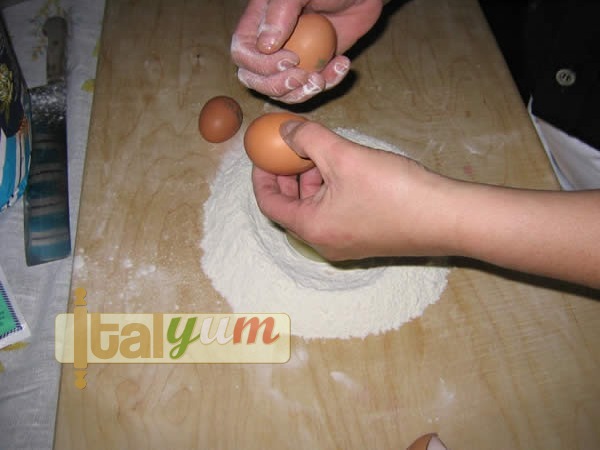
- This is what you should get.
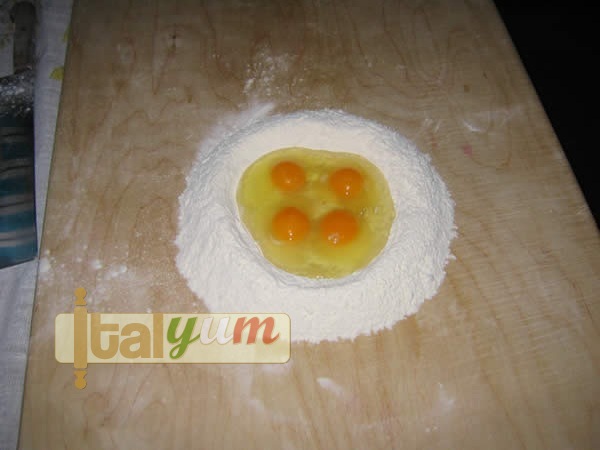
- Whisk with a fork for few minutes (say 4-5 minutes).
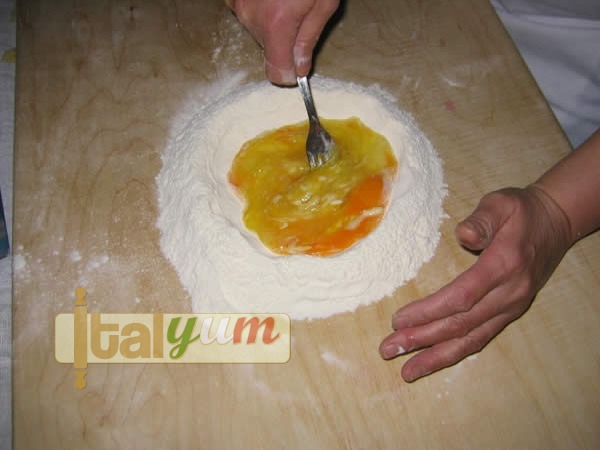
- While whisking, go wider and wider with the fork, bringing in some flour from the outer perimeter.
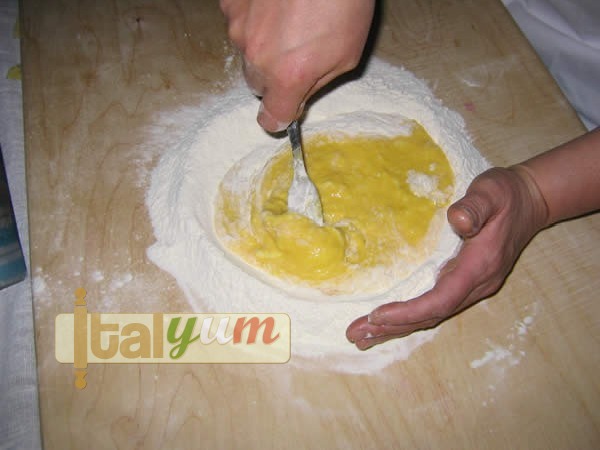
- Then, bring in all the flour from the outside and start working the dough with your hands.

- You need to work the dough energetically for about 10 minutes or so. Be sure that all the flour on the flat surface is completely absorbed into the dough. This stage can be tiring but this is the price you have to pay! The dough should be perfectly worked and externally should be smooth. The dough should be neither too soft nor too hard (see note at the bottom).

- Note:If you think that flattening one big dough piece is difficult, you can divide the dough in two parts and work them separately. Start rolling the dough from the top outer perimeter and when you have rolled one side, turn the dough 90° clockwise (a quarter turn) and roll the top side again and continue in this fashion.
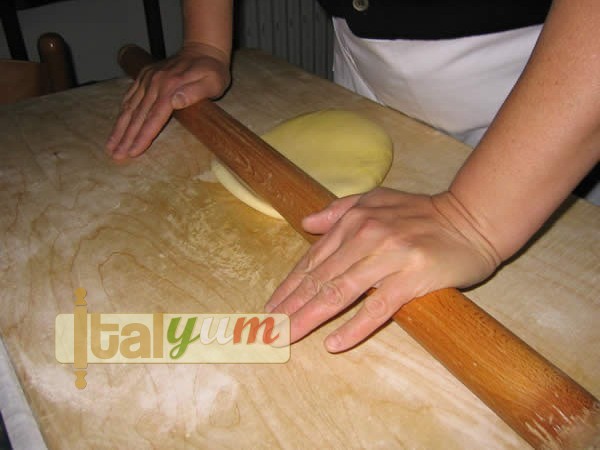
- Soon, you will see a kind of bump in the centre. That means you are doing a good job. The more you roll outwards, the more the bump will gradually disappear.
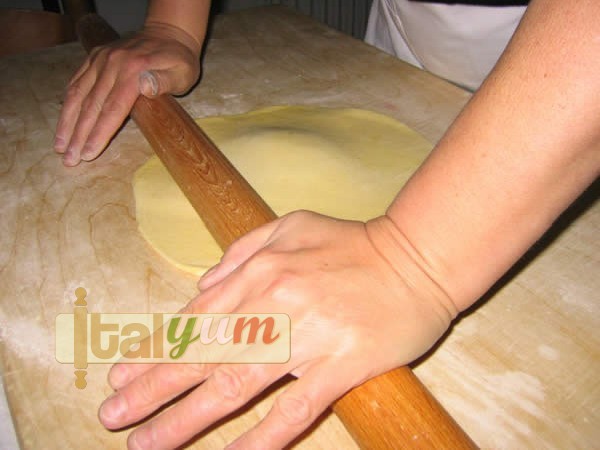
- Remember to rotate the flat pasta circle while rolling to guarantee that all the sides are the same thickness.
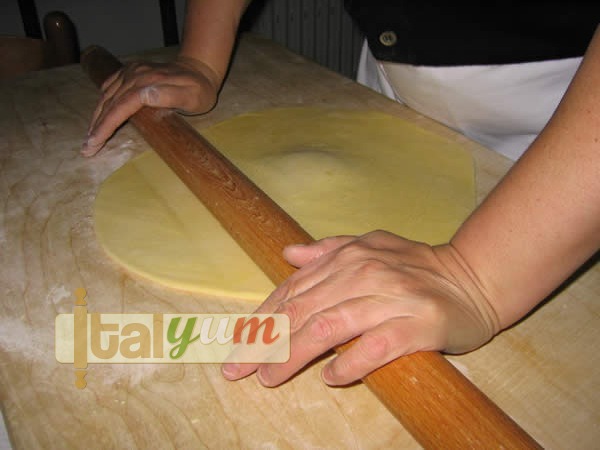
- When the bump disappears, keep rolling in order to reduce the thickness and keep rotating the pasta circle.
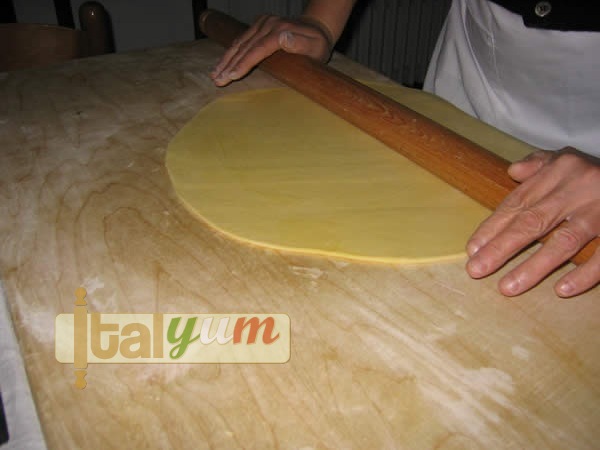
- Keep working, from the centre towards the outer border.

- Start working to further reduce the thickness.
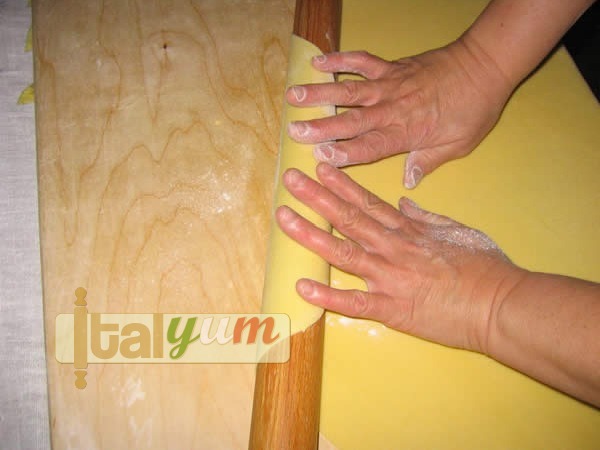
- Now, that the pasta shape is really large to handle, it is helpful to roll the pasta around the rolling pin. This makes the quarter turn much easier.

- When the pasta is completely rolled around the rolling pin, lay the pin on the left side of the board and unroll the pasta layer.
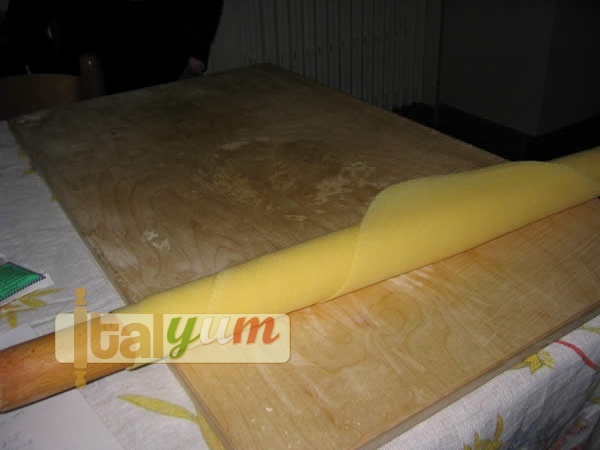
- This operation allows you to work on each side of the layer, rotating it regularly until the desired thickness is achieved. Abililty and skills come with experience, so keep practising to improve your technique.
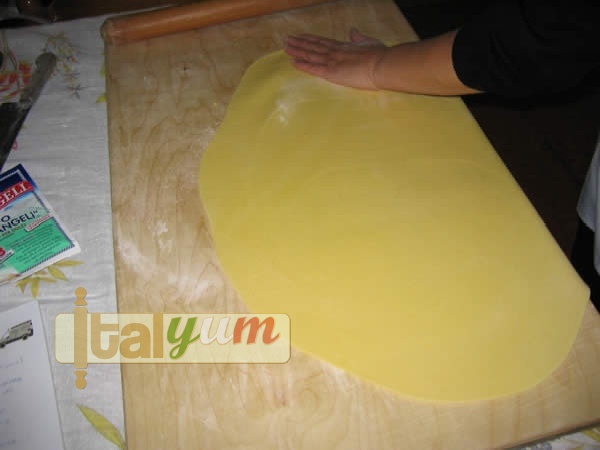
- Well, if you have done things properly, you should have a nice, flat, spotless (not sticky) thin layer of fresh pasta. The pasta needs to be uniformly thin, but not at the breaking stage.

- Lay the pasta sheet on the top of a table cloth. In this case we have used the sofa, but you can lay the pasta wherever you like.

- Leave the pasta sheet to dry until you think is perfect for making an “S” as shown in the following picture. The drying time depends on the ambient temperature and on the softness of the pasta. Just to give you a rough guide, if the kitchen temperature is about 20°C (68°F) probably 20-30 minutes is enough. Just try to bend one corner and see if does not stick – but if too dry, the pasta will be brittle.
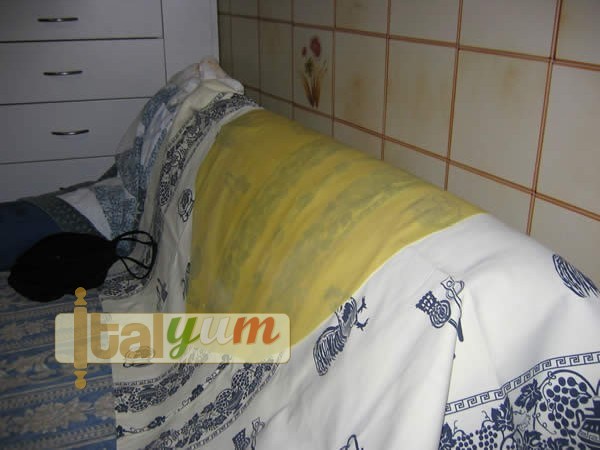
- Next, you can roll the pasta sheet making “S”. This enables you to cut the tagliatelle easily.
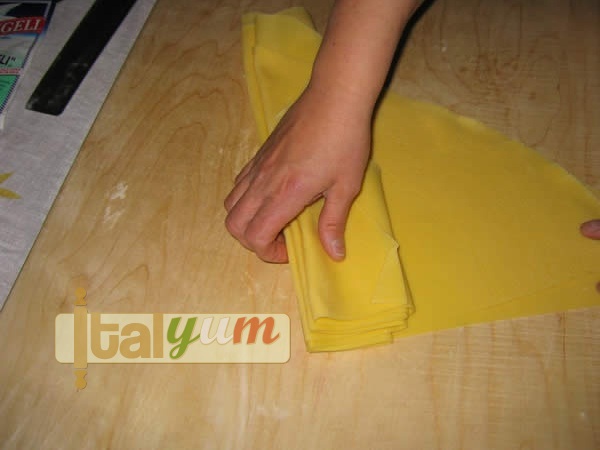
- When the “S” roll is done you are ready for the cut.
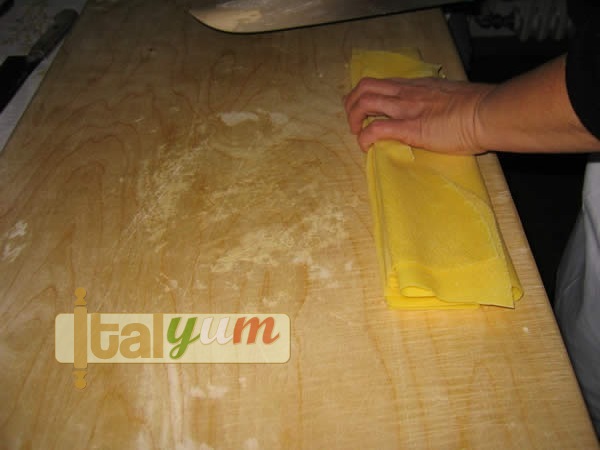
- Cut the tagliatelle to the desired width using a very sharp knife.

- Keep cutting until the end.
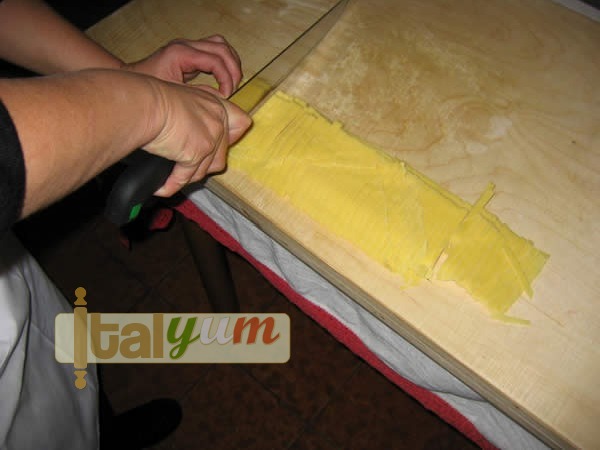
- Open the tagliatelle and spread them onto the board.
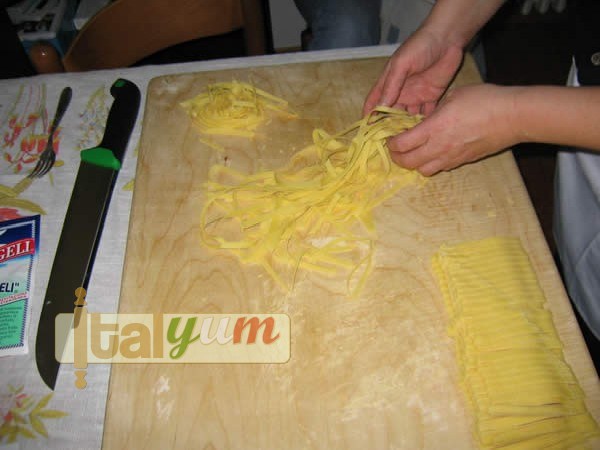
- Now, you can enjoy yourself making tagliatelle nests if you like a bit of decoration.
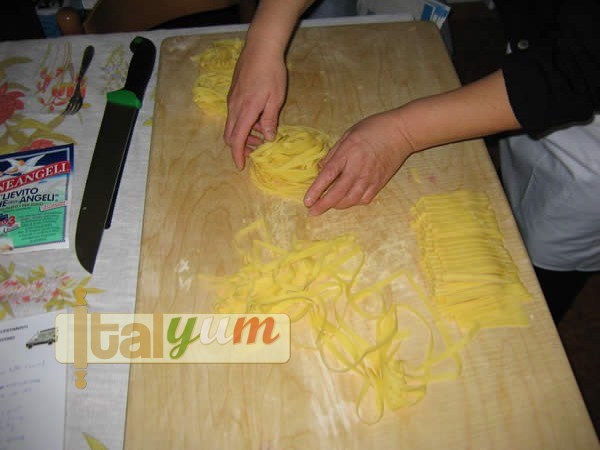
- 5 litres (approx. 5 quarts + 1 cup) of slightly salted boiling water is what you need now. Put the tagliatelle into the boiling water and wait until they come to the surface floating. This should take 2-3 minutes (if tagliatelle is very thin). Remember also, that tagliatelle must be “al dente” (firm to the bite) so, if you do not know the exact cooking time, I suggest you put just few strand of tagliatelle into the boiling water and test them every minute. When you are sure of the right texture, pour all the tagliatelle in the pan. Note: preparation of the dough is very important otherwise you will find difficult flattening the pasta with the rolling pin. If the dough is too soft you can still add some flour and if the dough is too hard you can add some milk. Another option is to add an extra egg at the initial stage and gradually add flour until the dough is perfect. After having worked the dough for about 10 minutes, I suggest putting it into a plastic bag for 10/15 minutes to rest before the flattenting stage. If you have divided the dough in two parts, leave one part in the plastic bag while you are working the other one.
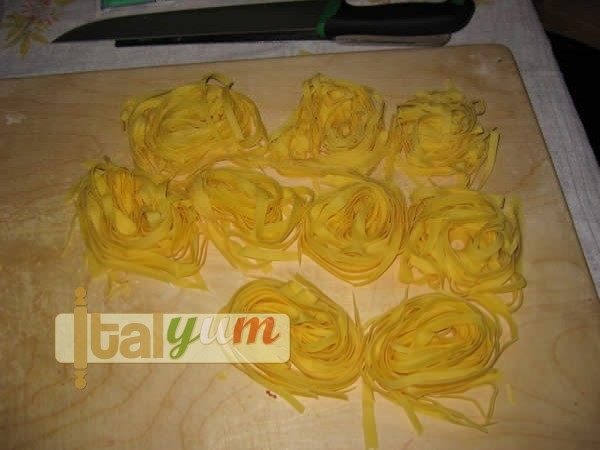
Nutrition
Calories: 650kcal
Tried this recipe?Let us know how it was!



